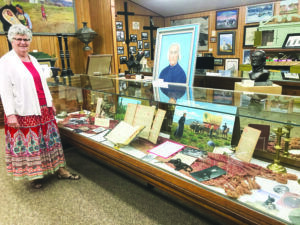
St. Mary’s Village at what is now the community of Stevensville. Photo by Victoria Howell.
One hundred and eighty years ago, a group of six Jesuits, led by Father Pierre DeSmet, arrived in the Bitterroot Valley at the request of the Salish tribe and founded St. Mary’s Mission on the banks of the river. This first community, established on September 24, 1841, was called St. Mary’s Village, which later became Stevensville.
Historic St. Mary’s Mission will hold a free Founders’ Day anniversary event on Saturday, September 25th to commemorate this significant part of the history of the native Salish people and the area.
The Salish were introduced to Christianity by members of the Iroquois Confederation who came here with the Hudson’s Bay Company. Some stayed here and intermarried, sharing the Christian teachings they had learned with the Salish. The Bitterroot Salish organized four quests to see if the
were unsuccessful in reaching St. Louis, with the third group being killed by members of the Sioux Tribe. But the Salish were determined to have the “Black Robes” come here. A fourth group, in 1839, came upon Father DeSmet among the Potawatomi Tribe in Council Bluffs in present-day Iowa. DeSmet went with the fourth group to St. Louis to meet with the bishop on their behalf. He was subsequently assigned to come to the Bitterroot to minister to the Salish.
According to Colleen Meyer, executive director of St. Mary’s Historic Mission, these were “very unusual circumstances with the natives inviting the Jesuits to settle here.” And, she added, “it was very successful.”
Over the next several years, three churches were built before the one that we see today. The first one, built on the east bank of the river, was flooded out. The second one was somewhat further east and out in the open but the congregation outgrew it. A third chapel was under construction when, in 1850, unrest in the area caused the Jesuits to leave the valley for a few years. The building was burned to save it from desecration. John Owen bought what remained of the settlement buildings and operated Fort Owen as a trading post in the new settlement.
In 1862, at the current site a little further to the south, Chief Victor’s cabin was built, now the oldest structure at St. Mary’s Mission grounds. In 1866, the older part of the chapel we see today was built and that was added to in 1879. St. Mary’s flourished under the leadership of Father Anthony Ravalli, first from 1845 to 1850 and then from 1866 until his death in 1884. Fr. Ravalli helped establish the first crops, the first grist mill, and the first school, among many other firsts. He is buried in St. Mary’s Cemetery. His pharmacy is displayed in one of several historic buildings on the Mission grounds.
The Salish were forced to leave the valley for the Flathead reservation in 1891.
At the Founder’s Day event, Father Craig Hightower, S.J., will speak about the remarkable Father DeSmet in the historic Chapel. Mass will follow at 12 noon in recognition of the invitation by the Salish to the Jesuit missionaries to come into their Bitterroot Valley homeland. Fr. Hightower belongs to the same order, the Society of Jesus, as Fr. DeSmet and has great respect for the 19th century missionary. Plus, Fr. Hightower, as pastor at St. Ignatius Parish on the Flathead Reservation, has a special connection to the Salish Tribe.
Meyer said that the non-profit Mission has had a good season, with many visitors, although they didn’t get the international guests they typically get, probably due to the pandemic. But all in all, she’s “very pleased.”
St. Mary’s Mission Chapel and Museum are located at 315 Charlos Street, Stevensville. The Mission and Museum are open Tuesday through Saturday from 11 a.m. to 2 p.m. for guided tours. A final presentation of the season will take place on closing day, Saturday, October 16th at 11 am.. Claire Charlo, a direct descendent of Chief Charlo, will present a talk entitled “Resiliency and Art.” The presentation is free and the public is encouraged to attend.